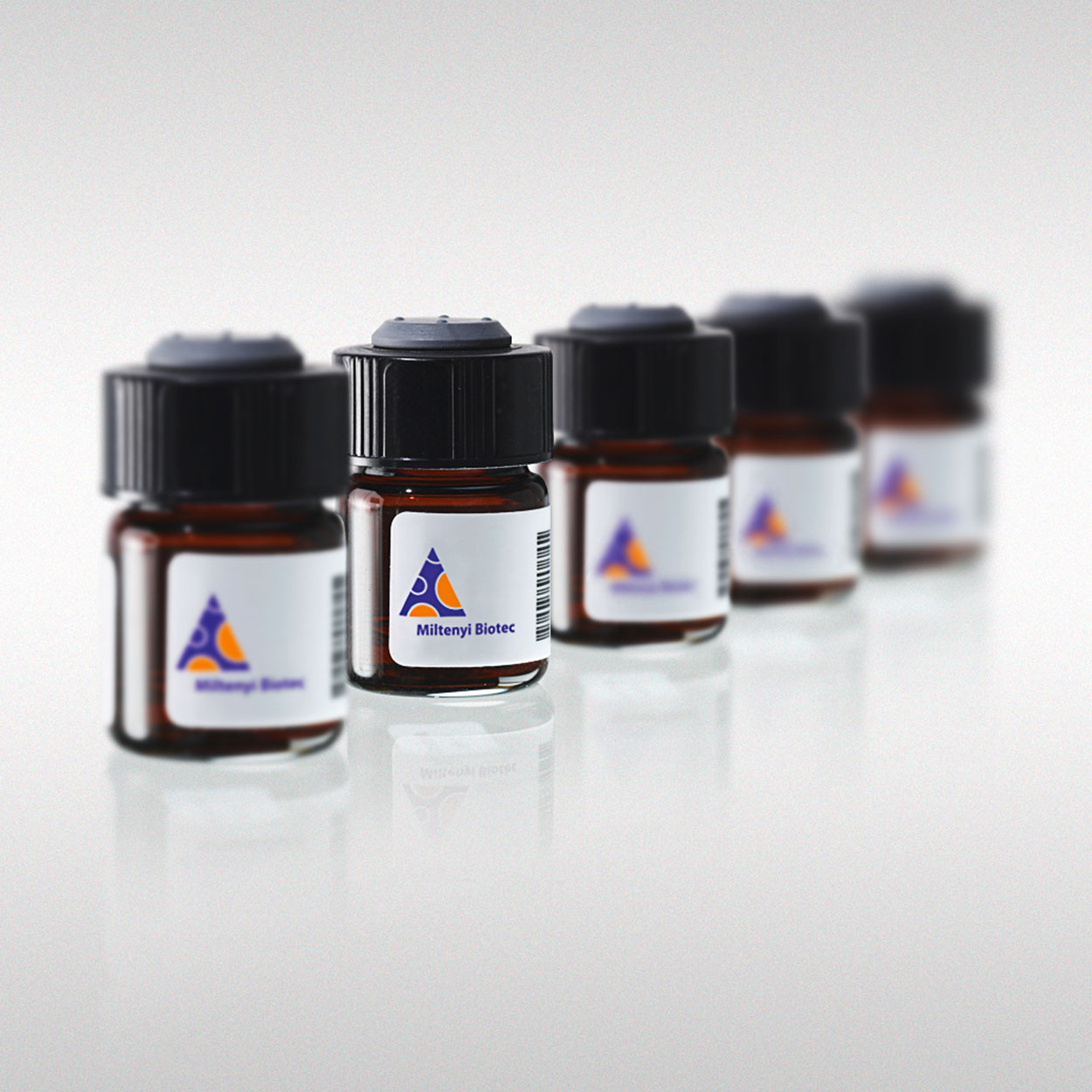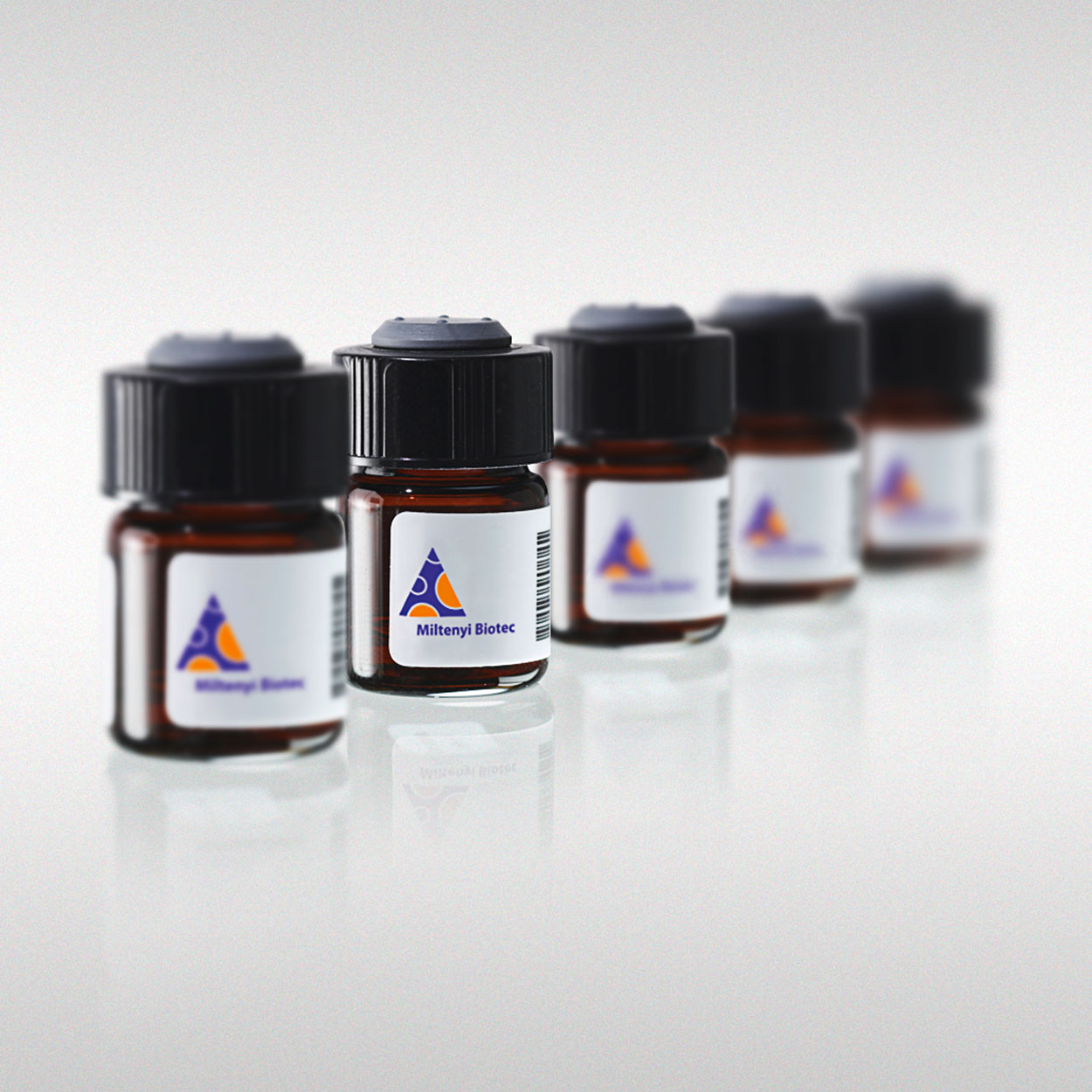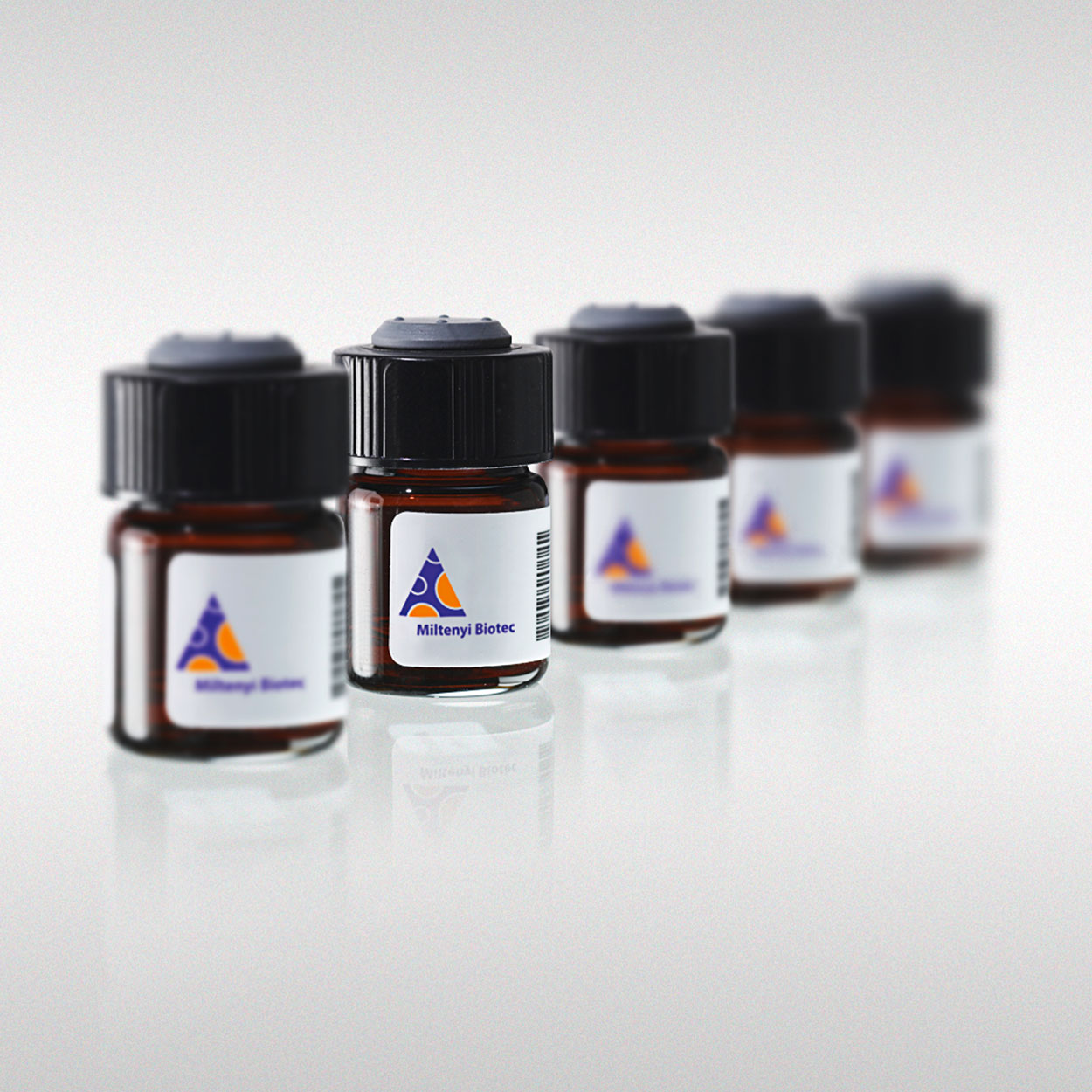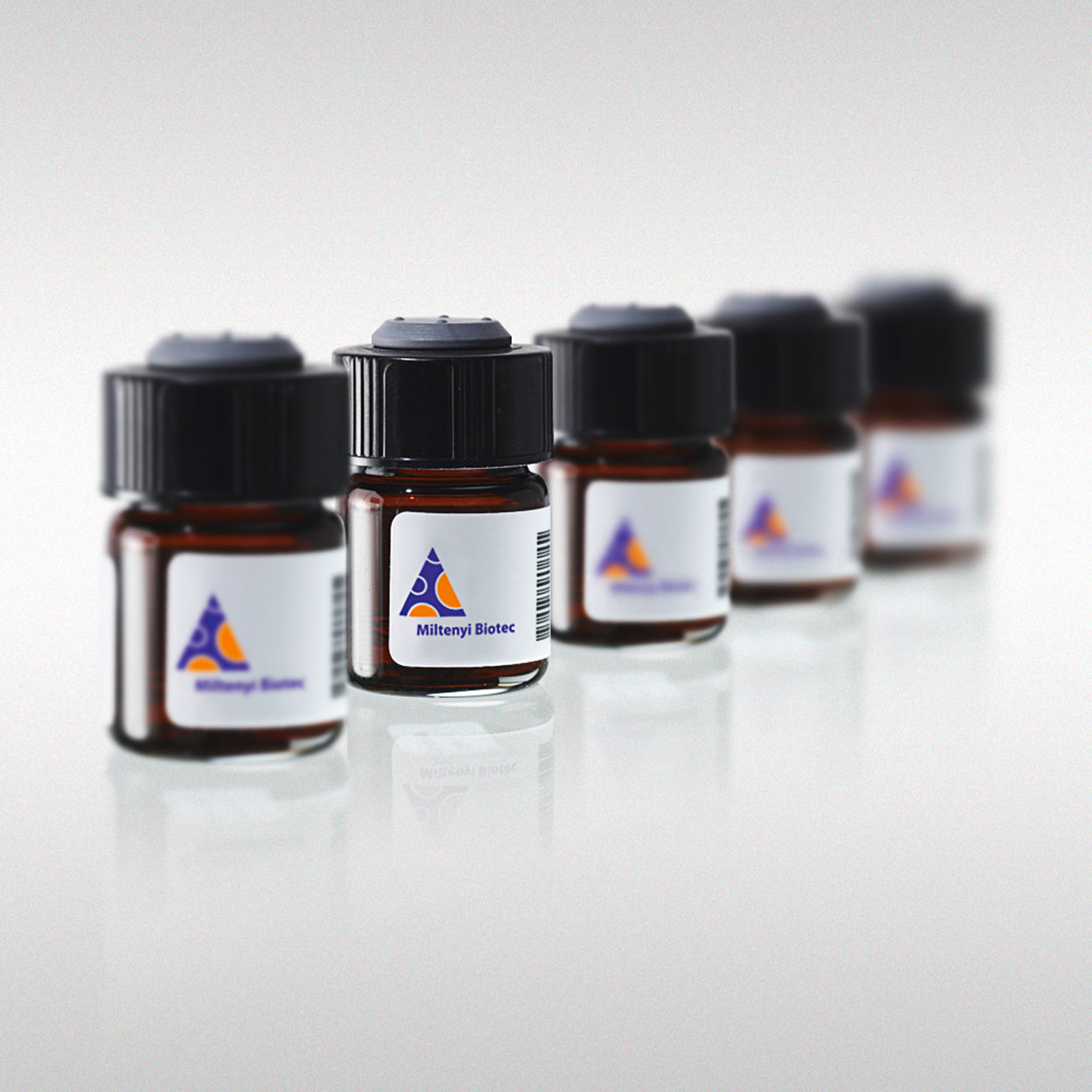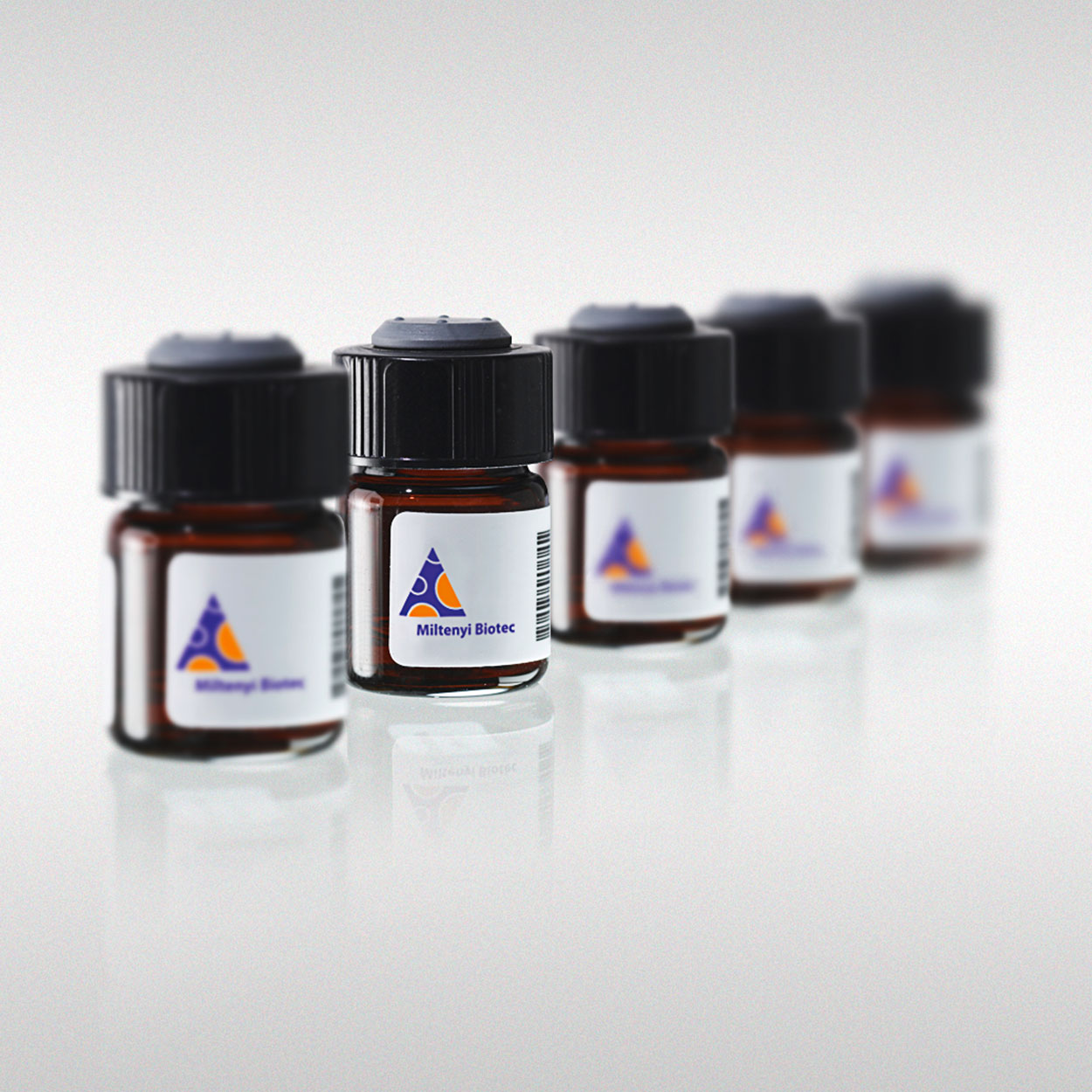Microbeads
Code: 130-048-701
Anti-FITC MicroBeads are widely used for indirect magnetic labeling and separation of cells or other materials which are labeled with a primary antibody or ligand conjugated to fluorescein isothiocyanate (FITC).
Specifications
Code: 130-095-826
The Anti-GLAST (ACSA-1) MicroBead Kit has been developed for the separation of astrocytes based on the expression of GLAST.
Specifications
Code: 130-046-101
Anti-HLA-DR MicroBeads have been developed for positive selection or depletion of antigen-presenting cells from PBMCs, cord blood, bone marrow, and tissue.
Specifications
Code: 130-047-501
Anti-IgG MicroBeads were developed for the positive selection or depletion of surface IgG-expressing B cell populations from PBMCs or single-cell suspensions from lymphoid tissues.
Specifications
Code: 130-093-230
Anti-IgM MicroBeads were developed for the positive selection or depletion of cells expressing IgM on their surface from PBMCs or single-cell suspensions from lymphoid tissues. The Anti-IgM MicroBeads recognize human IgM antibodies.
Specifications
Code: 130-094-842
Anti-iNKT MicroBeads have been developed for the positive selection of human invariant natural killer T cells (iNKT cells) based on the expression of the TCR α-chain Vα24-Jα18.
Specifications
Code: 130-100-781
The Anti-Ly6B.2 (7/4) MicroBeads, mouse can be used for isolation of neutrophils, inflammatory monocytes or myeloid progenitors from bone marrow or spleen.
Specifications
Code: 130-090-452
Overview
- enrichment of disseminated melanoma cells from peripheral blood, bone marrow, leukapheresis harvest, and lymphoid tissue of melanoma patients – even in early disease stages,
- isolation of melanoma cells from single-cell suspensions of primary tumor tissue or primary skin cell culture.
Specifications






